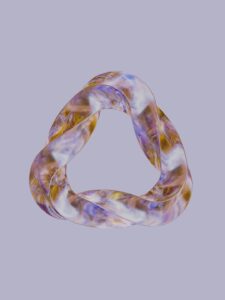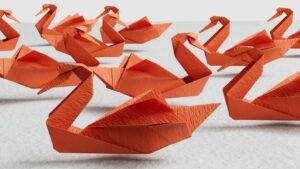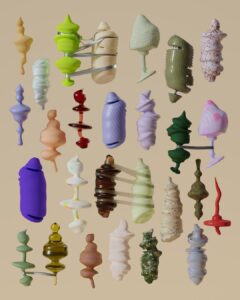Support our educational content for free when you purchase through links on our site. Learn more
[2023] The Ultimate Guide to 3D Printers: Everything You Need to Know
Introduction
Welcome to the ultimate guide to 3D printers! Whether you're a seasoned enthusiast or new to the world of 3D printing, we have all the information you need to make an informed decision. In this comprehensive guide, we'll explore the different types of 3D printers, their capabilities, costs, and much more. So let's dive right in!
Table of Contents
- Understanding 3D Printers
- Types of 3D Printers
- Factors to Consider When Buying a 3D Printer
- Popular 3D Printer Brands
- Recommended 3D Printer Models
- Materials for 3D Printing
- 3D Printer Software
- FAQs
- Useful Links
- Reference Links
Understanding 3D Printers
What is a 3D Printer?
A 3D printer is a remarkable technology that allows you to turn digital designs into physical objects. It works by building up objects layer by layer, using materials such as plastic, metal, or even bio-compatible materials. Unlike traditional manufacturing techniques, 3D printing offers unparalleled freedom in creating unique and complex shapes. It has revolutionized industries such as manufacturing, healthcare, and education.
How Does a 3D Printer Work?
At its core, a 3D printer uses a process called additive manufacturing. It starts by creating a 3D model using computer-aided design (CAD) software. The model is then sliced into thin layers using slicing software, which generates a set of instructions for the 3D printer. The printer then deposits material layer by layer, following the instructions from the slicing software, until the final object is complete.
The Benefits of 3D Printing
- Creativity and Customization: With a 3D printer, the only limit is your imagination. You can create custom parts, prototypes, personalized gifts, and much more.
- Rapid Prototyping: 3D printing enables quick iteration and design refinement, allowing for faster product development.
- Cost Savings: For certain applications, 3D printing can be a cost-effective alternative to traditional manufacturing methods, especially for low-volume production.
- Education and Learning: 3D printers are increasingly being used in classrooms and makerspaces, providing hands-on learning opportunities and fostering creativity in students.
Types of 3D Printers
FDM/FFF 3D Printers
Fused Deposition Modeling (FDM), also known as Fused Filament Fabrication (FFF), is the most popular and affordable type of 3D printer. These printers work by extruding molten plastic filament through a heated nozzle, which then solidifies as it cools. FDM/FFF printers are widely available and great for beginners and hobbyists.
SLA/DLP 3D Printers
Stereolithography (SLA) and Digital Light Processing (DLP) printers use a process called vat polymerization. These printers use a liquid resin that is cured by an ultraviolet (UV) light source to create the desired object. SLA/DLP printers offer high-resolution prints and are commonly used in applications requiring intricate details or smooth surfaces.
SLS 3D Printers
Selective Laser Sintering (SLS) printers use a laser to selectively fuse powdered materials, such as nylon or metal, to create 3D objects. SLS printers offer excellent strength and durability, making them suitable for functional prototypes and end-use parts. However, SLS printers are typically more expensive and require specialized knowledge to operate.
DMLS/SLM 3D Printers
Direct Metal Laser Sintering (DMLS) or Selective Laser Melting (SLM) printers are capable of 3D printing metal objects. These printers use a high-powered laser to selectively fuse metal powder, layer by layer, to create complex metal parts with high precision. DMLS/SLM printers are mainly used in industries such as aerospace, automotive, and medical.
Factors to Consider When Buying a 3D Printer
When choosing a 3D printer, certain factors can significantly impact your overall printing experience. Here are some key considerations:
Print Quality
Print quality refers to the level of detail and precision a 3D printer can achieve. Higher-quality printers offer better resolution, smoother surfaces, and finer details. Factors that affect print quality include layer height, nozzle diameter, and the overall mechanical design of the printer.
Build Volume
Build volume refers to the maximum size of objects a 3D printer can produce. If you plan to print larger objects, a printer with a larger build volume will be necessary. Keep in mind that larger build volumes often result in higher costs.
Print Speed
Print speed varies between different 3D printers and can be influenced by factors such as layer height, nozzle size, and print settings. While faster print speeds may sound appealing, they can sometimes compromise print quality.
Connectivity and Control Options
Consider the connectivity options available with a 3D printer. Many printers offer USB, SD card, or Wi-Fi connectivity for transferring print files. Additionally, look for printers with user-friendly interfaces and intuitive control systems.
Price Range
3D printers range in price from affordable models suitable for beginners to high-end professional machines. Determine your budget and make sure to account for any ongoing costs, such as filament and maintenance.
Popular 3D Printer Brands
When investing in a 3D printer, it's essential to choose from reputable brands known for their quality and reliability. Here are some of the most popular 3D printer brands:
| Brand | Website |
|---|---|
| Creality | creality.com |
| Prusa Research | prusa3d.com |
| Ultimaker | ultimaker.com |
| Formlabs | formlabs.com |
| Lulzbot | lulzbot.com |
These brands offer a range of 3D printers suitable for various use cases, budgets, and skill levels. Make sure to research each brand's product offerings to find the best fit for your needs.
Recommended 3D Printer Models
To help you get started, we've compiled a list of highly regarded 3D printers across different price ranges:
Budget-Friendly 3D Printers
- Creality Ender 3
- Anycubic i3 Mega
- Monoprice Select Mini V2
Mid-Range 3D Printers
- Prusa i3 MK3S
- Creality CR-10 V3
- FlashForge Creator Pro
Professional 3D Printers
- Formlabs Form 3
- Ultimaker S5
- Lulzbot TAZ Pro
These models have received positive reviews from users and are known for their reliability, print quality, and overall performance. Consider your budget and intended use when selecting a 3D printer.
Materials for 3D Printing
One of the goals of 3D printing is material versatility. Here are some commonly used materials for 3D printing:
- PLA: A popular and easy-to-use filament that is biodegradable and suitable for a wide range of applications.
- ABS: Offering more durability than PLA, ABS is known for its impact resistance and rigidity. It requires a heated bed for proper adhesion.
- PETG: Combining the best characteristics of PLA and ABS, PETG is highly durable, resistant to moisture, and prints easily.
- Nylon: Ideal for functional parts that require strength and flexibility. Nylon is known for its excellent impact resistance and durability.
- Metal Filaments: Various metal filaments can be used in 3D printers capable of printing metal, offering the possibility of creating metal parts with unique properties.
Different materials have distinct properties and printing requirements. Consider the specific characteristics you need in your prints, such as strength, flexibility, or heat resistance, when selecting the right material.
3D Printer Software
To prepare models for 3D printing and control your printer, you'll need software. Here are some popular options:
- Ultimaker Cura: A user-friendly slicing software compatible with many 3D printers. It offers advanced settings and allows for easy customization.
- PrusaSlicer: Designed specifically for Prusa 3D printers, PrusaSlicer provides excellent performance and extensive customization options.
- Simplify3D: Known for offering advanced features and optimizations for professional users, Simplify3D supports a wide range of printers and materials.
- Fusion 360: A powerful CAD/CAM software that allows you to create complex 3D models and generate toolpaths for your 3D printer.
These software options vary in features, complexity, and compatibility. Experiment with different programs to find the one that best suits your needs and skill level.
FAQs
How much is a 3D printer for home use?
The price of a 3D printer for home use can vary widely, depending on the brand, features, and printing capabilities. Entry-level printers can start as low as $200, while professional-grade machines can cost thousands of dollars. When considering a 3D printer for home use, it's essential to determine your requirements and budget.
Is it legal to own a 3D printer?
Yes, it is legal to own a 3D printer for personal use. However, it's crucial to be aware of certain legal and ethical considerations. For example, copyright laws still apply, so it's important to respect intellectual property rights when creating and sharing 3D printable models. Additionally, some countries may have restrictions on printing certain objects, such as firearms or regulated medical devices. Familiarize yourself with the laws and regulations in your jurisdiction when using a 3D printer.
What can you 3D print?
The possibilities of 3D printing are virtually limitless. People use 3D printers for various applications, including:
- Prototyping: Create functional prototypes to test and iterate on design concepts before production.
- Customization: Personalize objects with unique designs, patterns, or text.
- Education: Use 3D printers as educational tools to teach STEM concepts, design thinking, and problem-solving skills.
- Art and Sculpture: Bring digital designs to life with intricate and visually stunning 3D-printed sculptures.
- Medical Applications: 3D printing is revolutionizing healthcare by enabling the production of patient-specific models, prosthetics, surgical tools, and even organs (in experimental stages).
Whether you're a hobbyist or a professional, a 3D printer offers tremendous possibilities for creativity and innovation.
Can you 3D print metal?
Yes, it is possible to 3D print metal using specialized printers that utilize metal powders. Some common metal printing technologies include Direct Metal Laser Sintering (DMLS) and Selective Laser Melting (SLM). These printers use lasers to selectively fuse metal powders, layer by layer, to create fully dense metal parts. Metal 3D printing is widely used in industries such as aerospace, healthcare, and automotive.
Useful Links
- 3D Printed™ – Your go-to resource for all things 3D printing!
- Amazon – 3D Printers – Explore a wide range of 3D printers available on Amazon.
- Walmart – 3D Printers – Browse affordable 3D printers at Walmart.
- Etsy – 3D Printing – Find unique 3D printed items and accessories on Etsy.
- 3D Printing News – Stay updated with the latest news and developments in the world of 3D printing.
- YouTube – Introduction to 3D Printing – Watch this informative video to get started with 3D printing.
- Book: "The 3D Printing Handbook" – Delve deeper into the world of 3D printing with this comprehensive handbook.
Reference Links
- 3D Printing Industry – Leading source for news and trends in the 3D printing industry.
- All3DP – Provides in-depth reviews, tutorials, and guides on 3D printing.
- Make: Magazine – A go-to resource for makers, including comprehensive coverage of 3D printing.






